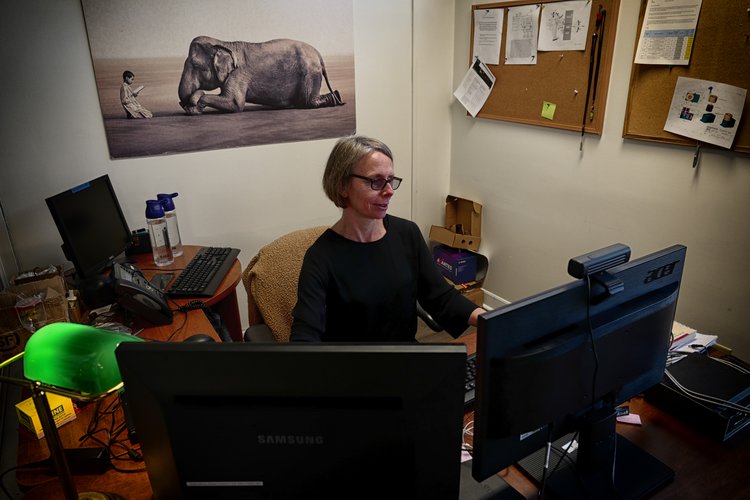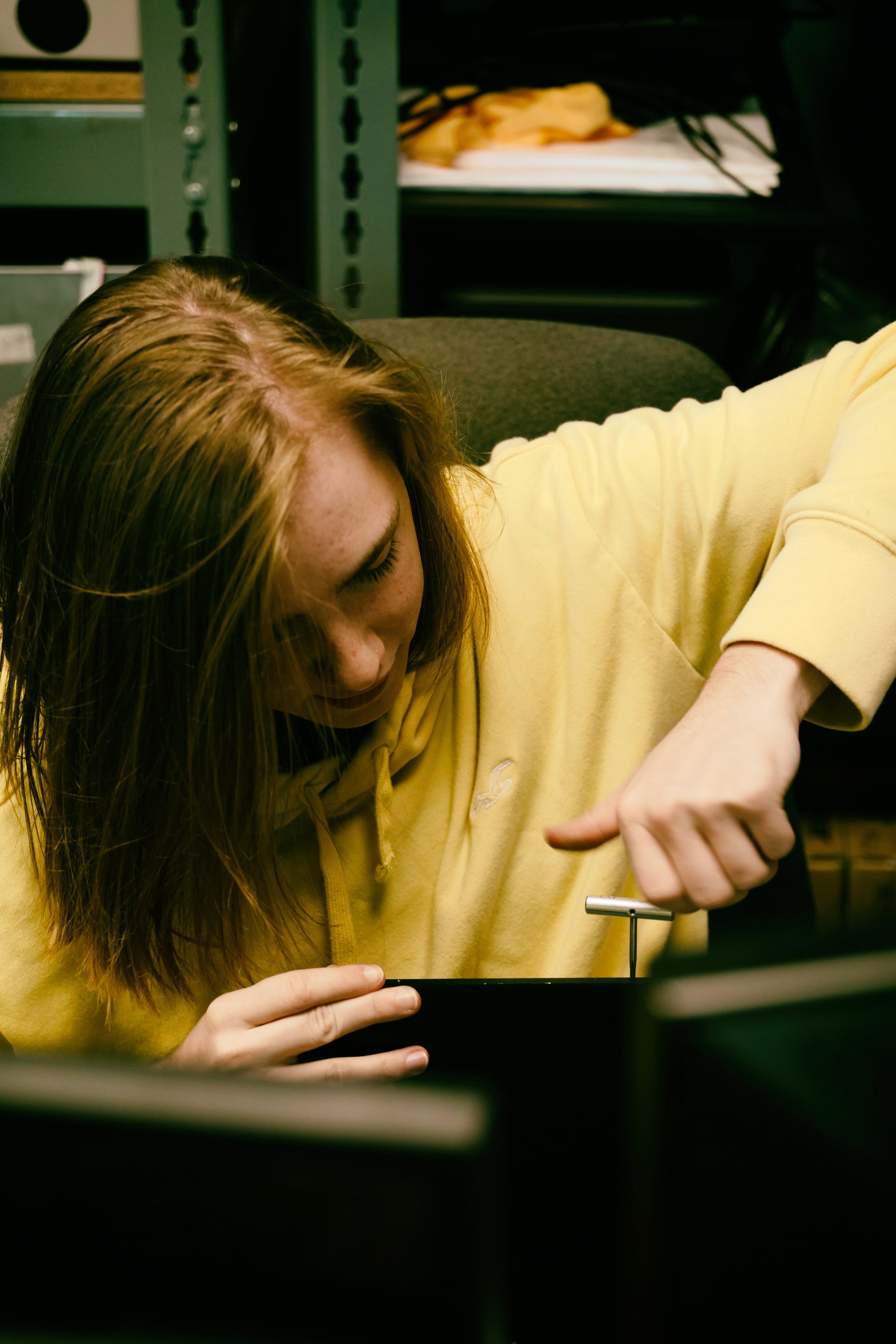The Buzz on Uv/vis/nir
The Buzz on Uv/vis/nir
Blog Article
How Uv/vis can Save You Time, Stress, and Money.
Table of ContentsThe Single Strategy To Use For Uv/vis/nirOur Uv/vis/nir IdeasMore About Uv/vis/nirThe Greatest Guide To SpectrophotometersAn Unbiased View of Uv/vis/nirTop Guidelines Of SpectrophotometersUnknown Facts About Uv/vis/nirHow Uv/vis/nir can Save You Time, Stress, and Money.Fascination About Uv/vis/nirHow Uv/vis/nir can Save You Time, Stress, and Money.The Best Guide To SpectrophotometersUv/vis Fundamentals ExplainedGet This Report about Circular Dichroism
It is then scanned through the sample and the recommendation services. Fractions of the incident wavelengths are sent through, or shown from, the sample and the reference. Electronic circuits transform the relative currents into direct transmission portions and/or absorbance/concentration worths.The transmission of a recommendation substance is set as a baseline (information) value, so the transmission of all other compounds are tape-recorded relative to the preliminary "zeroed" compound. The spectrophotometer then transforms the transmission ratio into 'absorbency', the concentration of particular components of the test sample relative to the preliminary substance.
Because samples in these applications are not easily available in large amounts, they are particularly fit to being analyzed in this non-destructive method. In addition, valuable sample can be saved by using a micro-volume platform where as little as 1u, L of sample is required for total analyses. A brief explanation of the treatment of spectrophotometry consists of comparing the absorbency of a blank sample that does not contain a colored substance to a sample which contains a colored compound.
The Single Strategy To Use For Circular Dichroism
In biochemical experiments, a chemical and/or physical home is picked and the treatment that is utilized specifies to that home in order to obtain more information about the sample, such as the quantity, purity, enzyme activity, etc. Spectrophotometry can be used for a variety of strategies such as determining optimal wavelength absorbance of samples, figuring out ideal p, H for absorbance of samples, figuring out concentrations of unknown samples, and determining the p, Ka of numerous samples.: 21119 Spectrophotometry is also a helpful procedure for protein purification and can also be used as a method to create optical assays of a substance.
It is possible to know the concentrations of a 2 element mixture using the absorption spectra of the basic solutions of each element. To do this, it is essential to understand the termination coefficient of this mix at 2 wave lengths and the termination coefficients of services that contain the recognized weights of the two elements.

The Spectrophotometers PDFs
Area. The concentration of a protein can be approximated by measuring the OD at 280 nm due to the presence of tryptophan, tyrosine and phenylalanine.
Nucleic acid contamination can likewise interfere. This method needs a spectrophotometer capable of determining in the UV area with quartz cuvettes.: 135 Ultraviolet-visible (UV-vis) spectroscopy includes energy levels that excite electronic transitions. Absorption of UV-vis light delights particles that remain in ground-states to their excited-states. Visible area 400700 nm spectrophotometry is used extensively in colorimetry science.
20. 8 O.D. Ink makers, printing companies, textiles suppliers, and numerous more, require the data supplied through colorimetry. They take readings in the area of every 520 nanometers along the visible area, and produce a spectral reflectance curve or an information stream for alternative discussions. These curves can be utilized to check a new batch of colorant to check if it makes a match to requirements, e.
Indicators on Spectrophotometers You Need To Know
Traditional noticeable area spectrophotometers can not discover if a colorant or the base material has fluorescence. This can make it tough to handle color problems if for instance several of the printing inks is fluorescent. Where a colorant includes fluorescence, a bi-spectral fluorescent spectrophotometer is used (https://www.livebinders.com/b/3570027?tabid=514355ed-03f4-acee-f8e7-d79f6b7bffab). There are two major setups for visual spectrum spectrophotometers, d/8 (round) and 0/45.
Researchers utilize this instrument to measure the quantity of substances in a sample. In the case of printing measurements 2 alternative settings are typically utilized- without/with uv filter to control much better the result of uv brighteners within the paper stock.
Circular Dichroism for Dummies
Some applications need small volume measurements which can be carried out with micro-volume platforms. As explained in the applications area, spectrophotometry can be used in both qualitative and quantitative analysis of DNA, RNA, and proteins. Qualitative analysis can be utilized and spectrophotometers are used to tape spectra of compounds by scanning broad wavelength areas to identify the absorbance properties (the strength of the color) of the compound at each wavelength.

Uv/vis/nir Can Be Fun For Anyone
One significant factor is the type of photosensors that are readily available for various spectral areas, but infrared measurement is likewise challenging due to the fact that practically everything discharges IR as thermal radiation, particularly at wavelengths beyond about 5 m. Another issue is that many materials such as glass and plastic take in infrared, making it incompatible as an optical medium.
Recovered Dec 23, 2018. Essential Laboratory Methods for Biochemistry and Biotechnology (2nd ed.). The essential guide to analytical chemistry.
Oke, J. B.; Gunn, J. E.
7 Simple Techniques For Spectrophotometers

Ninfa AJ, Ballou DP, Benore M (2015 ). Basic Laboratory Methods for Biochemistry and Biotechnology (3, rev. ed.). circularly polarized luminescence. Lab Equipment.
All About Circularly Polarized Luminescence
"Applied Spectrophotometry: Analysis of a Biochemical Mix". Biochemistry and Molecular Biology Education. Journal of Biochemistry Education.
What Does Uv/vis Mean?
U.S. Department of Commerce National Bureau of Standards special publication; 378. Washington, D.C.: U.S. National Bureau of Standards. p. 2. OCLC 920079.
The process starts with a controlled light source that brightens the analyzed sample. In the case of reflection, as this light engages with the sample, some is soaked up or released. The emitted light journeys to the detector, which is evaluated, quantified, and presented as industry-standard color scales and indices.
Industry governing bodies generally specify specific metrics for particular products, such as Tomato and Coffee indices. The simplified mathematics looks like this: Where R is the reflection coefficient. All terms are evaluated over the noticeable spectrum from 400 to 700 nm. In the case of transmission, when the light communicates with the sample, it is either taken in, shown, or transmitted.
The Buzz on Spectrophotometers
Examples include APHA (American Public Health Association) for watercolor and purity analysis, ASTM D1500 for petrochemical color analysis, edible oil indices used in food, and color analyses of drinks. All terms are assessed over the noticeable spectrum from 400 to 700 nm.
Image Credit: Matej Kastelic/ Dr. Arnold J. Beckman and his associates at the National Technologies Laboratories first developed the spectrophotometer in 1940. In 1935 Beckman founded the business, and the discovery of the spectrophotometer was their most ground-breaking creation. Dr. Bruce Merrifield, a Nobel prize-winning biochemist, specified that the development of the spectrophotometer was "most likely the most important instrument ever developed towards the advancement of bioscience." Before the discovery of the spectrophotometer, chemical analyses took weeks to complete, with 25% precision.
The Definitive Guide to Spectrophotometers
Over time, scientists kept enhancing the spectrophotometer style to boost its efficiency. The UV capabilities of the model B spectrophotometer were enhanced by changing the glass prism with a quartz prism.
After 1984, double-beam versions of the device were designed. The addition of external software application with the arrangement of onscreen Related Site displays of the spectra was available in the 1990s. Usually, a spectrophotometer is made up of 2 instruments, particularly, a spectrometer and a photometer. A fundamental spectrophotometer contains a light source, a monochromator, a collimator for straight beam transmission, a cuvette to place a sample, and a photoelectric detector.
Not known Facts About Circular Dichroism
There are different types of spectrophotometers in different sizes and shapes, each with its own purpose or functionality. A spectrophotometer figures out how much light is reflected by chemical components. circular dichroism. It measures the distinction in light intensity based on the overall quantity of light introduced to a sample and the quantity of beam that travels through the sample solution
A spectrophotometer is utilized to determine the concentration of both colorless and colored solutes in an option. This instrument is used to determine the rate of a reaction.
Report this page